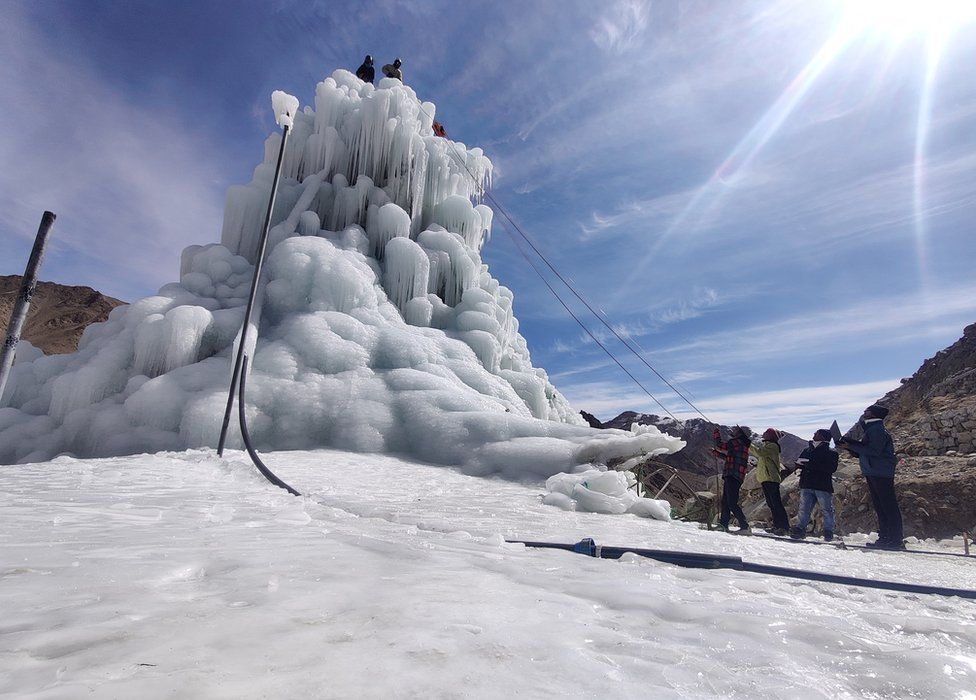
©University of Aberdeen via BBC
Pre-reading questions:
I will read each question. Then, please answer them.
講師がそれぞれの質問を読むので答えましょう。
- What is the hottest place in your country?
- Do you like hot weather?
Vocabulary:
I will read the words, meanings, and sample sentences. Then, repeat after me.
単語、意味、例文を読みます。講師に続いて音読しましょう。
- experience /ik-SPEER-ee-uhns/
- worse /wurs/
- freeze /freez/
- invent /in-VENT/
- manage /MAN-ij/
[verb] – to have something happen to you, or to do or feel something
The students experienced difficulties solving the math problem.
[adjective] – comparative of bad; more unpleasant, difficult, or severe than before or than something else that is also bad
Reo’s fever is worse compared to yesterday.
[verb] – to become cold enough to become solid
Water can freeze at below-zero temperature.
[verb] – to design and/or create something that has never been made before
Who invented the telephone?
[verb] – to control or organize someone or something
She managed to finish the tasks before the deadline.
Article reading:
Please read the whole article. Then, I will check your pronunciation and intonation.
記事を音読しましょう。講師はあなたの発音とイントネーションを確認します。
Scientists from the University of Aberdeen are developing artificial glaciers to solve the water shortage in Ladakh in the Himalayas. It is one of the driest regions in the world, and the villages are experiencing severe water shortages, especially in April and May. Climate change made the situation worse and has caused glaciers to melt. As a solution, the artificial glaciers are used to store water in the winter then release it in the spring. The water rises up and out of the tip of a vertical pipe at the top once pressure rises in the tube. The ice-cold air then freezes the water into a pyramid-like shape. Engr. Sonam Wangchuk invented the artificial glaciers in 2013, but they are still in their development stage. However, Aberdeen’s Cryosphere and Climate Change research group is improving the technology to use it more widely. The artificial glaciers can release millions of liters of water each year, and researchers believe that their structure makes them efficient, cost-effective, and simple to manage.
True or False:
Read the sentences and identify if they are true or false based on the article.
文章を読んで、記事に基づいて正誤を答えましょう。
- Ladakh is one of the driest regions in the world.
- The villages in Ladakh experience severe water shortage in April only.
- The artificial glaciers are used to store water in the spring.
- The artificial glaciers were created in 2013.
- Aberdeen’s Cryosphere and Climate Change research group is improving the artificial glaciers.
Fill in the blanks:
Choose the correct word from the table then fill in the blanks.
適切な言葉を選んで空欄を埋めましょう。
| experience | worse | freeze | invent | manage |
- If the rain gets _______, let us cancel the meeting.
- Charles Babbage _______ the computer.
- Anna knows how to _______ big projects.
- Have you _______ any difficulties learning English?
- Could you _______ this cake?